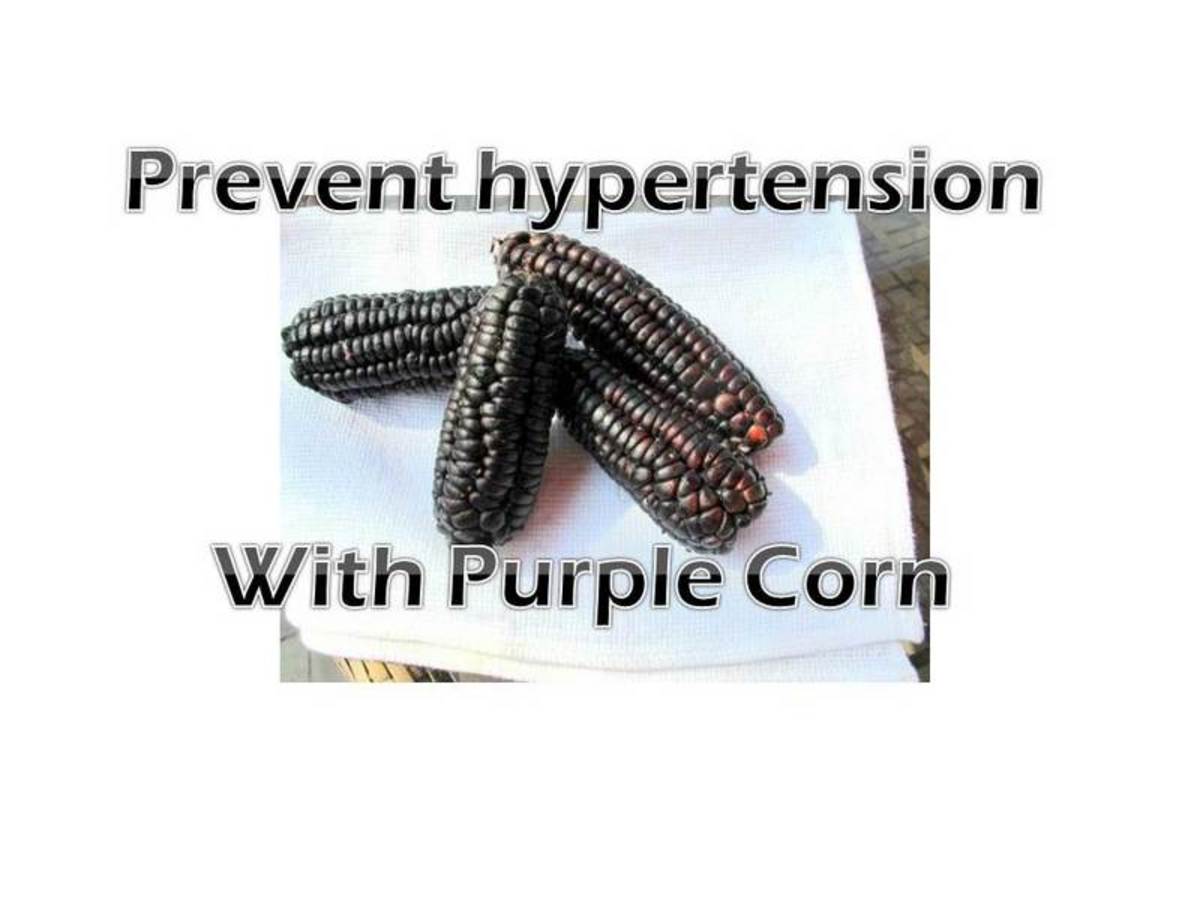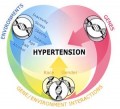Living with Atherosclerosis and Arteriosclerosis
Causes, Signs and Symptoms
- Arterioslerosis and Atherosclerosis involve the build-up of deposits on the inside of arterial walls that cause thickening and hardening of the arteries [1]
- In Arteriosclerosis, these deposits are mainly composed of calcium whereas in Atherosclerosis, these deposits mainly comprise fatty substances plus artery walls losing their elasticity and thus harden [1]
- Both conditions have similar effects on circulation, causes hypertension which leads on to angina (chest pain brought upon by exertion), heart attack, stroke and/or sudden cardiac death [1]
- Is a Chronic disease
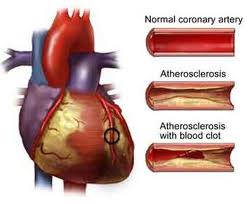
Causes/Aetiology [1]:
- Calcium and fatty deposits usually form in areas of the arteries weakened by high blood pressure or strain
- Consequent narrowing of arteries thus make blood pressure even higher
- As arteries become less pliable and permeable, cells may experience ischaemia (oxygen starvation) due to insufficient circulation
- The fatty plaques can be either unstable or stable. Unstable plaque allows particles to break away and cause further blockage downstream in the smaller vessels which pose immediate clinical importance
- Should one of the coronary arteries become obstructed by accumulating deposits or a blood clot that has either formed or snagged on the deposit, the heart muscle will be starved of oxygen leading to a heart attack (older adults are at greater risk)
- When Arterioslerosis occludes the arterial supply of blood to the brain, a cerebrovascular accident or stroke occurs
- About 8 million people in America suffer from Peripheral Arterial Disease (P.A.D) with 3 out of 4 people unaware that they have it; relative common condition that affects as much as 20% of the American population ages sixty-five years and older and most have at least 1 major risk factor from below
- Major Risk Factors for Atheroslerosis include [1]:
- Smoking
- Family History
- Hypertension
- Diabetes
- Or Abnormal Cholesterol levels
- Advancing age increases likelihood of the above diseases as does atherosclerosis of the coronary or cerebral arteries
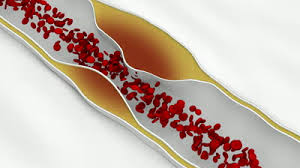
SIGNS/SYMPTOMS [1]:
- Peripheral Atherosclerosis (or arteriosclerosis obliterans) is a type of peri-vascular disease wherein the lower limbs are affected. This leads to limitations in mobility and also cause loss of a limb. Sufferers are very likely to also have these diseased arteries elsewhere in the body, mainly in the heart and brain
- Early signs of peripheral atherosclerosis are [1] :
- Aching muscles, fatigue and cramping pains in the ankles and legs. Dependant upon which arteries are blocked, it can also affect the hips and thighs
- Intermittent claucidation [1]:
- Is typically the first symptom of developing peripheral atherosclerosis
- involve pain in the legs (most often in the calf but sometimes in the foot, thigh, hips or buttocks) brought on by walking and relieved by rest
- Other symptoms include numbness, weakness and heavy feeling in the legs all attributed to the insufficient amount of oxygenated blood that’s passing through the plaque-clogged arteries to meet the needs of the exercising leg muscles
- The closer the problem is to the abdominal aorta (the central artery that branches into the legs), the more tissue affected and the more dangerous the condition
PATIENT QUESTIONAIIRE
ADULT: 60 YEAR OLD FEMALE, SMOKER, HIGHLY STRESSED INDIVIDUAL
FAMILY HISTORY: Hypertension, High Cholesterol and Diabetes
PREVIOUS TREATMENTS: Atacand 16mg once daily for Hypertension, Iron supplement
EXAMINATION (Please see Health Appraisal Indicators):
- Hypertension: Previously 180/110; after Atacand 140/85
- Medical Blood Tests reveal: hypercholesterolemia
- Total Cholesterol of 7mmol/L, LDL of 4.5mmmol/L, HDL of 1.3mmol/L and Triglycerides of 1.8mmol/L
- Aching Muscles, Fatigue and Cramping pains in ankles and legs
- Feels tired easily
- Suffers from shortness of breath especially upon exertion
- Headaches especially in the morning
- Irritable and Feels nervous often
- Indigestion and often Anaemic
- Hemorrhoids
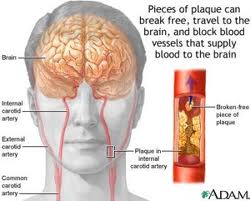
Clinical Tests [1]
- A simple test can determine how well your blood flows through the arteries in your legs [1];
- There are 3 areas on the lower leg where a pulsating artery can be felt by lightly touching the skin covering the artery (top of the foot, inner aspect of the ankle and behind the knee) [1]
- Apply pressure lightly on these 3 spots. If there is no pulse, this indicates the artery supplying the leg may be narrowed; special studies may be needed so consult your health care provider [1]
- Diagnostic Tests can include one or more tests [2]:
- (I) Blood Tests [2]
- Measure Sugar and Proteins in your blood; Abnormal levels may be a sign of increased atherosclerosis risk
- Tests for cholesterol provide results for four different types of lipids and provide us with information on the amount of fats in the blood that can cause fatty deposits[3]:
- Total cholesterol
- LDL (low-density lipoprotein), the "bad cholesterol"
- HDL (high-density lipoprotein), the "good cholesterol"
- Triglycerides, another form of fat in the blood
- (II)EKG (Electrocardiogram) [2]
- A simple painless test that detects and records the heart’s electrical activity
- Shows how fast the heart is beating and its rhythm (steady or irregular)
- Records strength and timing of electrical signals as they pass through the heart
- Can show signs of heart damage caused by Coronary Heart Disease CHD)
- (III) Chest X-Ray
- Takes pictures of the organs and structures inside your chest (heart, lungs, blood vessels)
- Can reveal signs of Heart Failure
- (IV) Ankle/Brachial Index
- Compares blood pressure in your ankle with the blood pressure in your arm to see how well your blood flow is; helps diagnose P.A.D
- (V) Echocardiography
- Uses sound waves to create information on size and shape of your heart plus how well your heart chambers and valves are working
- Can identify areas of poor blood flow to the heart, areas of heart muscle that aren’t contracting normally and previous injury to heart muscle caused by poor blood flow
- (VI) Computer Tomography Scan
- Creates computer-generated pictures of the heart, brain or other areas of the body
- Can show hardening and narrowing of large arteries
- A Cardiac CT scan can show whether Calcium has build up in the walls of the coronary arteries which is indicative of CHD
- (VII) Stress Testing
- Where one exercises to make their heart work hard and beat fast when tests are done (if you can’t exercise, medicines may be given to make your heart work hard and beat fast); when your heart is working hard, it needs more blood and oxygen and plaque-narrowed arteries can’t supply enough oxygen-rich blood to meet your heart’s needs
- Imaging stress tests can show how well blood is flowing in various parts of the heart
- Can show possible signs and symptoms of CHD like:
- Pressure
- Shortness of breath or chest pain
- Abnormal changes to your heart rhythm or the electrical activity of the heart
- (VIII)Angiography
- Test that uses dye and special X-rays to show the inside of the arteries
- Can show whether plaque is blocking the arteries and how severe the blockage is
- (VIIII) Other Tests
- To give better view of plaque build-up in arteries
- Some examples are Magnetic Resonance Imaging (MRI) and Positron emission tomography (PET)
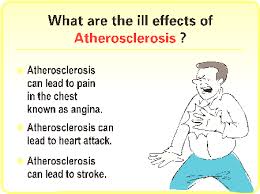
TREATMENT
Conventional [5]:
- Antihypertensives (e.g Diuretics like Thiazides and Loop diuretics, Beta-blockers, ACE-inhibitors, Angiotensin II Receptor Antagonists, Calcium channel blockers)
- Medicines for Hypercholerolaemia (e.g. Statins, Bile-acid binding resins, Ezterol, Nicotinic Acid )and Hypertriglyceridaemia (Fibrates like Gemfibrozil and Fenofibrate)
- Aspirin 100mg daily to thin the blood and prevent angina and stroke
The Natural Approach (with doses):
- Diet and Lifestyle [1,5]
- Stop smoking
- Avoid eating fast foods and greasy fried foods
- Eat high fibre food that is low in unhealthy versions of saturated fats (e.g. fried chips); Fruits, vegetables and legumes and grains should be your primary foods and lean meat sources
- Regular Moderate Exercise (30 minutes daily at least three times per week)
- Stress-Management Techniques; hobbies, music, exercise, meditation
- Drink Green Tea daily to lower lipids and cholesterol levels (in the day time preferably if suffer from insomnia due to caffeine content); as it contains Vitamin K, it may decrease blood thinning properties of aspirin so take at least 2 hours apart
- Chamomile Tea at night to aid with insomnia (careful not to have excess as can weaken the stomach if used in excess)
- Barley in diet (to decrease cholesterol)
- Nutrients & Herbs [1,6]
- For Gastrointestinal and Metabolic Rate indications:
- Raw B Complex (also helps with Nervous indications like stress; Blood pressure and helps with circulation); 1 tablet TWO to THREE times daily or as directed on label
- Inositol; as directed on label
- Choline; as directed on label
- Dessicated Liver substances (help with anaemia too);
- Pancreatic enzymes (lipase, amylase and protease); Multiple enzyme complex as per indicated on label taken before meals three times daily
- Bromelain (help with muscle aches and pains too as is an anti-inflammatory); as directed on label usually three times/day
- For Metabolic rate indications:
- Potassium(Blackmores PPMP tablets; contains magnesium too) ; 1 tablet THREE times/day
- Kelp tablets/capsules; 500-650mg/day
- Organic Iodine
- Garlic; Fresh Garlic 4grams/day or Garlic perles (oil capsules); 10mg daily
- For Functional Nervous Indications:
- B Complex (especially riboflavin, pyridoxine and panthothenic acid);
- Chelated Forms of Magnesium & Calcium (also helps in post-menopausal women to preserve bone integrity) plus Vitamin D; 1500mg/day Calcium at bedtime, 750mg Magnesium at bedtime, 450mg Vitamin D in the morning [helps with maintain proper muscle tone in the blood vessels)
- Lecithin: 2400mg capsules (or 1tbsp granules) THREE TIMES DAILY with meals
- Melatonin (to help improve sleep); 2-3mg/day taken 2 hours or less before bedtime
- Passionflower; Dried herb: 0.125-0.5g three times daily
- Oats eaten in the diet for breakfast ( 25-50 grams daily)
- Chamomile 300-400mg capsules as often as six times per day (standardized to 1% apigenin and 0.5% essential oil)
- For Hormone and Enzyme Indications[1,6]:
- Potassium [as per above)
- Calcium chelates (as per above)
- Niacin and Panthothenic Acid (as per above)
- Magnesium (as per above)
- Vitamin E 500IU /day
- Vitamin C (Ester C with bioflavonoids); 5000-20000mg daily in divided doses
- DHEA; 15-25mg/day (for women above 50 yeas old)
Others [1]
- Co-enzyme Q10 100mg/day (improve tissue oxygenation)
- Essential fatty acids (Omega-3 complex with Vitamin E to prevent it from getting rancid); as directed on label usually 1000mg three times daily with food [helps lower blood pressure, maintain proper vessels elasticity)
- L-cysteine (promote fat burning and builds up muscle); 500mg/day on an empty stomach taken with water or juice (Avoid with milk); take with 50mg Vitamin B6 and 100mg Vitamin C for better absorption
- L-methionine 500mg/day (on empty stomach; helps prevent fatty build-up in arteries
- L-carnitine 500mg/day (on empty stomach (protects heart and lowers plasma triglycerides)
- Capsicum peppers (or cayenne): 400-500mg three times/day
- Chickweed 3 capsules three times/day
- Hawthorn Berries capsules; 200mg/day
PROGNOSIS
Regular monitoring and adhering to the diet and lifestyle advice is imperative to ensure the risk of heart disease and other chronic disorders like diabetes and complications from these diseases are kept to a minimum.




